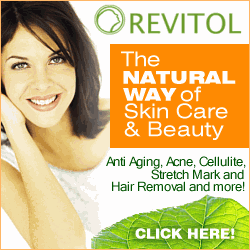You can forget buying the latest clothes, getting your nails done or having a pedicure. The only thing worth focusing on is your skin; the rest can look after themselves! Your skin is one of the first things we notice as we start to age because of the fact it loosens, sags, dries out, oils up, gets wrinkles, develops age spots and changes colour in patches throughout our lifetime not to mention the trauma of our teens with hormones causing it to break out which can leave long term scars. It is so important to look after our skin, not just on our faces but all over our body because as we get older we retain less of the vital vitamins we need to ensure healthy skin and balance.
There are a million and one things on your local drug store shelves, in magazines, even in the beauty aisle at the supermarket so it's little wonder we get confused about what is the right product for our particular skin. If you have sensitive skin or it has problems such as acne which need more specialist products and treatment it is better to go for more high end products which are designed to combat individual problems and have a higher concentration of vitamins, minerals and oils.
Try a facial first and see how your skin reacts to the products, get the facialist to write down the names of the products and see if you can get any samples so you can keep up the routine at home and check the products don't dry out your skin or bring you out in spots after a period of time. Low end products can sometimes be very drying especially if they are to combat oily zones or acne because of the acid they contain whilst some of the moisturisers are not rich enough to penetrate below the surface skin layer so it can feel like you constantly have to apply moisturiser. This isn't true for all products of course; some low end products are actually incredibly effective such as nappy rash cream for drying out individual spots or basic baby oil which locks in moisture better than many moisturisers. High end products can also wreak havoc on sensitive skin due to the perfumes and can be a waste of money if your skin doesn't seem to have any noticeable changes to it as the adverts indicate.
Get samples where possible and check the internet for reviews before buying anything expensive and ask friends for recommendations. If you find a product that works for you make sure you take a look at the ingredients so you can keep an eye out for similar products and pass them onto your siblings or children who may have similar skin to you.


















